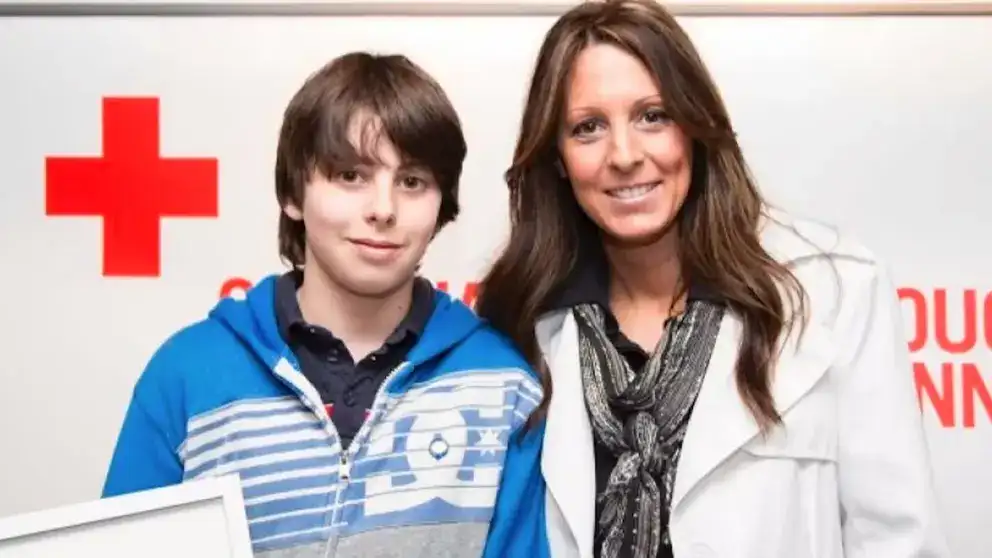As the single mom of two kids, Ronda Young was used to feeling tired and overwhelmed. So, when she had two dizzy spells in January 2014, she didn’t think much of it. Several weeks later, Ronda collapsed in her living room in Dartmouth, NS.
Ronda’s son Jesse, who was 14 at the time, jumped into action. He called 9-1-1 and performed CPR on his mom until the paramedics arrived. They used an AED (automated external defibrillator) to deliver three shocks to Ronda’s heart. At the hospital, Ronda was placed in a medically induced coma.
She awoke the following evening in a hospital bed, suspecting something had happened to her heart. Her doctor confirmed that she had experienced a cardiac arrest — her heart had suddenly and unexpectedly stopped beating.
Ronda was shocked to learn that her heart was both enlarged and severely scarred. She was diagnosed with non-ischemic dilated cardiomyopathy — the result of restricted blood flow to the heart muscles, which weakens and thins the walls of the heart chambers.
Every nine minutes
an out-of-hospital cardiac arrest happens in Canada .
Ronda was fitted with an implantable cardioverter-defibrillator (ICD) — a small device that monitors her heartbeat and delivers a shock to her heart if it needs to be restored back to a regular rhythm.
“Receiving my diagnosis and my ICD was a very emotional time for me,” says Ronda, now 53. “I wasn’t happy about having to adjust to my new reality, but I understood that my ICD was key to protecting me from future complications. It was going to allow me to continue to live my life as normally as possible.”
Just three months after getting her ICD, Ronda experienced her first shock, followed by another two months later.
After further testing, her medical team confirmed her cardiomyopathy was likely caused by cardiac sarcoidosis — a rare disease in which clusters of white blood cells, called granulomas, form in the tissue of the heart. These cell clusters can interfere with the heart’s electrical system and cause irregular heartbeats (arrhythmias). Cardiac sarcoidosis can also result in heart failure. The disease tends to affect younger people, between 25 and 45 years old.
Ronda has had two other shocks from her ICD. Today, she is passionate about sharing her experience with others to teach them about the importance of learning CPR and how it can save lives.
An estimated 60,000 out-of-hospital cardiac arrests happen every year in Canada — that’s one every nine minutes.
I know exactly how critical it is to administer CPR immediately — it is the difference between life and death.
Fast action saves lives. Doing CPR and using an AED immediately on a person in cardiac arrest can double their chance of survival.
“I know exactly how critical it is to administer CPR immediately — it is the difference between life and death,” Ronda says. “My son’s CPR training and his quick action saved my life. I encourage everyone to get certified in CPR so that they may also be prepared to help someone in need one day.”
Ronda continues to share her experience through her recent book, Heart Disease & Me: A Cardiac Arrest Survival Story. Her hope is that telling her story will inspire other women who may be wearing multiple hats to prioritize their own health and practice healthy habits.
- Learn more about Ronda’s book.

